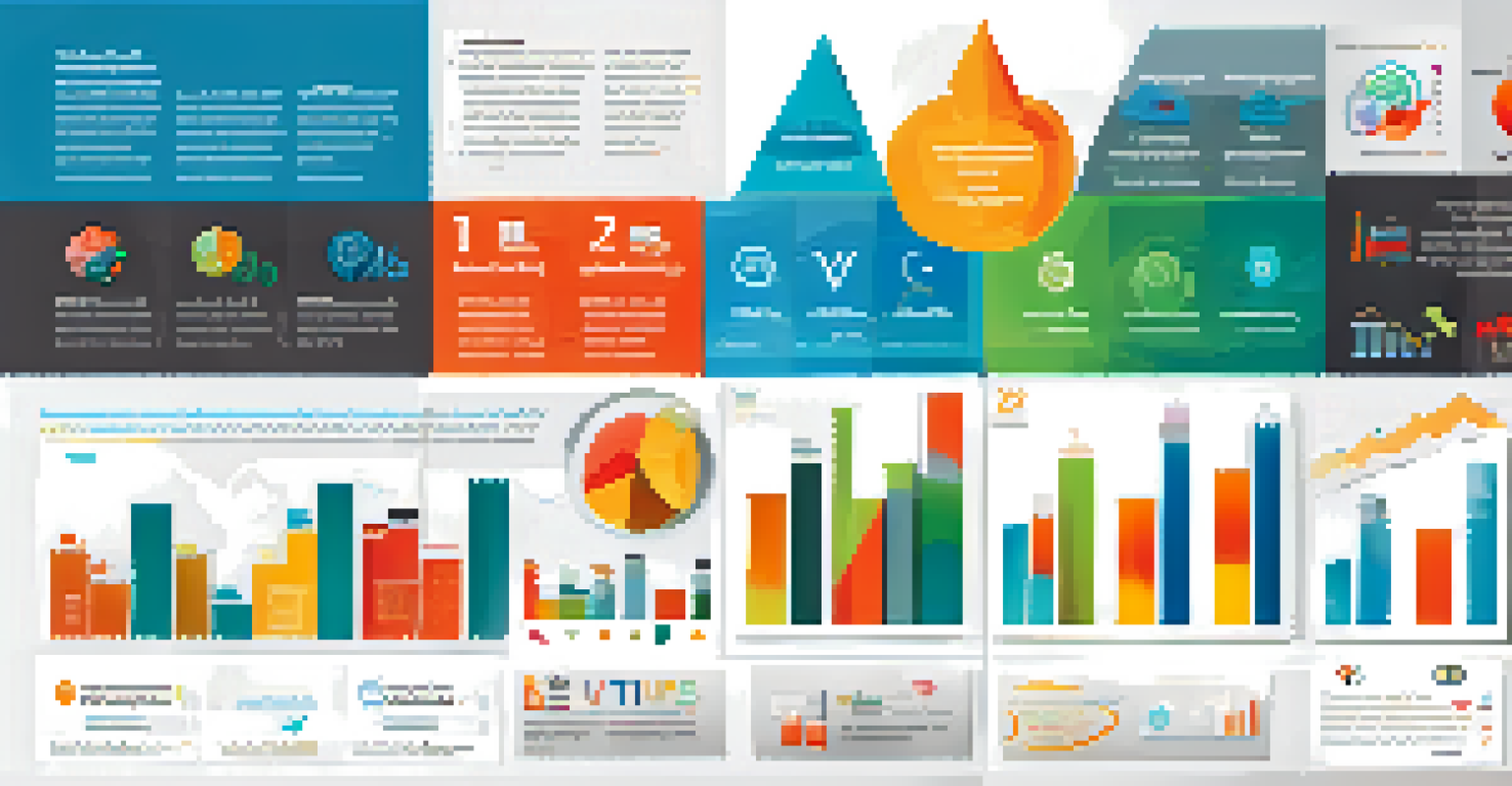Creating a Unique Value Proposition in Finance Branding

Understanding the Importance of a Unique Value Proposition
A Unique Value Proposition (UVP) is crucial for any brand, especially in finance where competition is fierce. It clearly communicates what sets your financial services apart from others in the market. Think of it as your brand's elevator pitch, succinctly highlighting the benefits you offer to clients.
Your brand is a story unfolding across all customer touch points.
In finance, a strong UVP helps build trust and credibility, which are essential for attracting and retaining clients. For example, if your firm specializes in sustainable investing, your UVP could emphasize your commitment to ethical practices. This not only distinguishes you from competitors but also appeals to a growing demographic of socially conscious investors.
Ultimately, a well-crafted UVP serves as the foundation for your branding strategy. It informs your messaging, shapes client experiences, and guides your marketing efforts. Without it, your brand risks blending into the crowd, leaving potential clients uncertain about what you truly offer.
Identifying Your Target Audience in Finance
To create a compelling UVP, you first need to understand your target audience. In finance, this could range from individual investors to large corporations, each with distinct needs and pain points. By knowing who your ideal clients are, you can tailor your messaging to resonate with them.

For instance, if your target audience consists of millennials looking to invest, your UVP might focus on technology-driven solutions and educational resources. On the other hand, if you cater to high-net-worth individuals, emphasize personalized wealth management services. Understanding your audience's motivations and challenges allows you to position your brand effectively.
Craft a Unique Value Proposition
A Unique Value Proposition (UVP) clearly communicates what sets your financial services apart, helping to build trust and attract clients.
Conducting market research and gathering feedback from current clients can provide valuable insights into their preferences. This information will help you craft a UVP that speaks directly to your audience's desires, making them more likely to choose your services over others.
Analyzing Competitors for Effective Differentiation
Once you’ve identified your target audience, it’s essential to analyze your competitors. Understanding what others in the finance industry are offering will help you pinpoint gaps in the market. This analysis can reveal potential opportunities for your brand to shine.
People don’t buy what you do; they buy why you do it.
For example, if most of your competitors focus on traditional investment strategies, you could differentiate yourself by highlighting innovative approaches, such as robo-advisors or impact investing. Knowing how your competitors position themselves allows you to carve out a unique space for your brand.
Remember, differentiation doesn’t always have to be about offering something completely new. Sometimes, it’s about presenting a familiar service in a way that resonates more deeply with your audience. By leveraging your unique strengths, you can create a UVP that stands out in a crowded marketplace.
Crafting a Clear and Compelling Message
With insights from your audience and competitor analysis, it’s time to craft your UVP. The key is to communicate your value clearly and concisely. A compelling UVP should be easily understandable, avoiding jargon that could confuse potential clients.
For example, instead of saying, 'We optimize financial portfolios,' you might say, 'We help you grow your wealth with personalized investment strategies.' This approach speaks directly to the client's desire for growth and personalization.
Know Your Target Audience
Understanding your target audience's distinct needs allows you to tailor your UVP and messaging effectively.
Additionally, consider using storytelling to make your message more relatable. Sharing a brief anecdote about how you helped a client achieve their financial goals can make your UVP more tangible. The right message can evoke emotions, making it easier for clients to connect with your brand.
Integrating Your UVP into All Marketing Channels
Once your UVP is established, it's crucial to integrate it into all your marketing channels. From your website to social media, your UVP should consistently shine through in every piece of content. This helps reinforce your brand identity and keeps your messaging cohesive.
For instance, if your UVP highlights exceptional customer service, ensure that your website testimonials and social media posts reflect this commitment. Consistency in messaging not only builds trust but also strengthens brand recognition over time.
Moreover, consider how your UVP can be showcased in various formats, such as videos, infographics, or blog posts. Different channels cater to different audiences, and adapting your UVP to suit each platform can enhance engagement and reach.
Testing and Refining Your Unique Value Proposition
Creating a UVP is not a one-time task; it's an evolving process that requires regular testing and refinement. After launching your UVP, gather feedback from clients and prospects to evaluate its effectiveness. Are they resonating with your message, or does it need tweaking?
You can use tools like surveys or A/B testing to assess how different versions of your UVP perform in the market. For example, you might test two different headlines on your website to see which one leads to more inquiries. This data can provide valuable insights into what aspects of your UVP are most appealing.
Refine Your UVP Regularly
Continuously testing and refining your UVP ensures it remains relevant and aligned with market trends and consumer preferences.
Continuous refinement ensures that your UVP remains relevant and aligned with market trends. As consumer preferences shift, your UVP may need adjustments to effectively communicate your value. This adaptability is key to maintaining a strong and competitive brand presence.
Showcasing Your UVP Through Client Success Stories
One of the most powerful ways to demonstrate your UVP is through client success stories. Real-life examples illustrate how your services deliver value and solve problems for your clients. These stories can resonate with potential clients by showing them the tangible benefits of working with you.
Consider creating case studies that detail specific challenges a client faced and how your services helped them overcome those challenges. This narrative not only reinforces your UVP but also builds credibility and trust. Prospective clients can envision themselves achieving similar results.

Additionally, sharing testimonials on your website or social media can further validate your UVP. Positive feedback from satisfied clients acts as social proof, enhancing your brand's reputation and making it more appealing to potential customers.